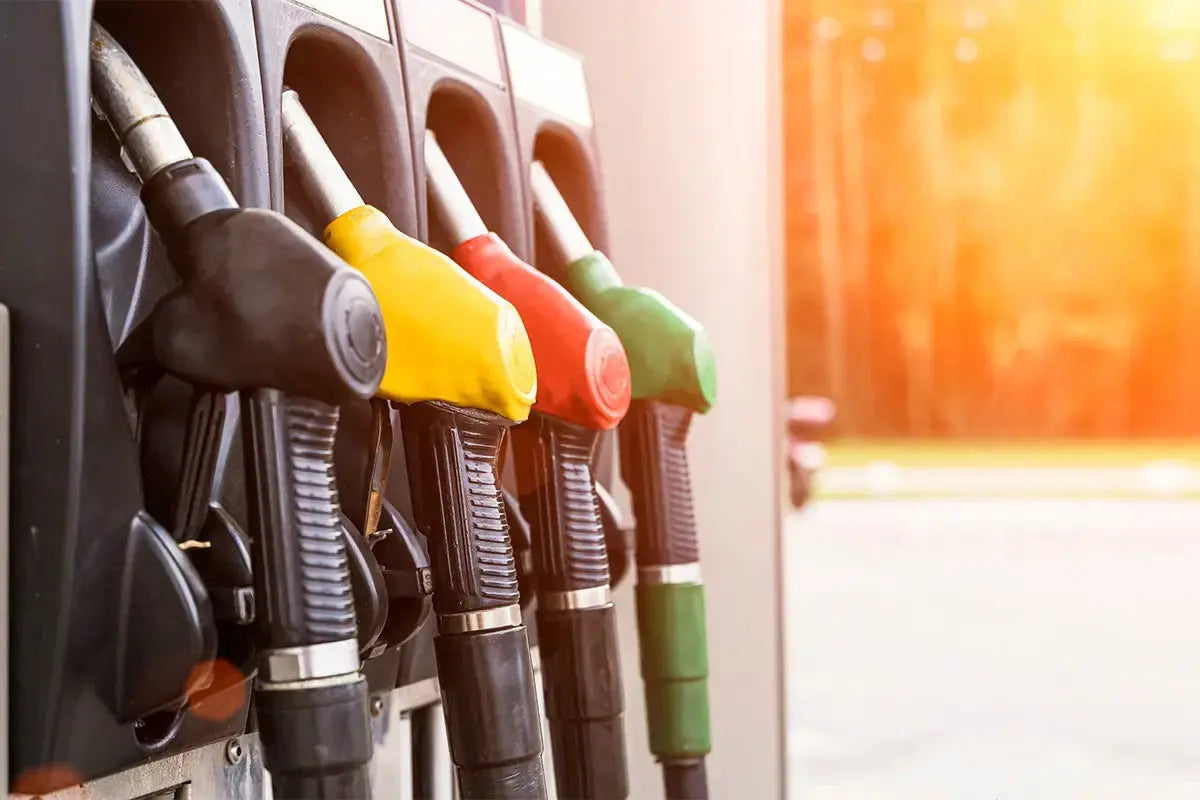
Whatever the case, don’t worry because it (hopefully) isn’t too late. Oxidation is a regular occurrence with older cars and isn’t impossible to fix, granted that the clear coat is still intact and the metal hasn’t been exposed and began to rust.
With a little elbow grease and the right products, you can have your car beaming with beauty once again. read this informational article in shine armor blog.
What Causes Oxidation?
Oxidation is when the paint on your car begins to literally break down over time caused by exposure to oxygen, heat, and ultraviolet rays. It’s a loss of the oils within the paint that holds together the color and shine that we love so much, but sadly no paint job will last forever.
In fact, the paint job isn’t the only thing to be concerned about. The paint will first lose its shine, and then the color will begin to dull and eventually begin to disappear completely. If you’ve seen a car with white splotches that appear chalky and worn, that’s oxidation.
Once the paint reaches this point and the clear coat has deteriorated completely, the metal underneath becomes exposed. This makes your car susceptible to rust that can severely and permanently damage your car's body.
you can see these car wash related products in shine armor:
When the Damage Has Gone Too Far
Once your car has reached critical damage and you see the primer underneath your paint job, that means that your paint and clear coat have been completely obliterated. You won’t be able to just remove the oxidation; you’ll need to actually repaint your car completely.
You might be tempted to just repaint the affected areas, but trust us, if one spot on your car is at this point, it’s worth it to have the whole body done at one time. Otherwise, you might find yourself back in the shop for another spot in the near future.
Read this article: What is a Good Substitute for Car Wash Soap?
How To Remove the Oxidation
As long as your clear coat is still intact, even if you’re dealing with heavy oxidation, there’s still a chance you can remove it and bring your paint back to life.
Remember, if you are at the point where the clear coat is gone and you’re left with white, splotchy spots on your car, it’s likely too late to remove and restore. Sadly, your beloved car will need a new coat of paint.
But let’s hope it hasn’t gone that far yet!
Clean the Area (And the Rest of Your Car)
The first thing you’ll want to do is make sure you’re working with a completely clean surface, particularly on the specific area but likely your whole car. Since oxidation likely isn’t limited to one surface but is just visible at one surface, you’ll want to do a deep clean of the entire body.
Use a high-quality car wash soap and go to town on your car, cleaning every nook and cranny you can but still focusing on the area you’ll be working on.
Read this article: Why is My Car Making a Whining Noise?
Use a Clay Bar To Remove Dead Paint
What we want to do is remove the dead paint that’s causing the fade and splotches. Oxidized paint begins to flake and spread and further the damage caused by oxygen and the sun.
Pick out a reliable clay bar kit and make sure to follow the instructions to remove any of these flakes and oxidation. You don’t want to remove the paint underneath the damage; we want as little paint gone as necessary. Consider this step like removing the existing disease before we begin to heal what’s left.
Polish
The clay bar is the first step in removing the oxidation; polishing is the second. You’ll want to do two different phases of polishing: Cutting and finishing.
Cutting polish, otherwise known as a compound, generally uses a more abrasive formula to pull away at the faded layers of paint to expose the bold paint underneath. You want to be extremely gentle with this process and remove as little paint as possible to get the job done.
Finishing polish is more of a shine that boosts the oils within the paint. This brings back that deep shine that we all love and adore.
The big question when it comes to polishing: Is it possible to do without an electric polisher? Basically, the answer is sort of, but you’d be much better off using the machine.
The process of polishing requires a lot of energy and stability; you need to keep the pad constantly moving in methodical, slow, sweeping motions while simultaneously keeping steady, circular movement to get the most out of the pad and the product you’re using.
If that sounds difficult to do with your hands and arms, that’s because it is. Not only is it difficult to get the smoothness that you need for a good polish job, but you’re also bound to get exhausted in doing so. So even if you were to manage to get the motions right, you’re not going to last nearly as long as the machine will.
If you’re working on a particularly small spot, you might be able to get the job done without the electric polisher, but generally speaking, we suggest investing in one. You might even be able to rent one for the day from somewhere, but trust us, it’s worth it.
Read this article: How Much Oil Does My Car Need?
How To Prevent Oxidation in the Future
Once you’ve cleared your car of oxidation, your first thought is probably going to be, “How do I make sure I don’t have to do this again?” The answer is actually fairly simple:
Taking regular precautions and applying protection to your car will significantly reduce any worries of oxidation in the future; you just need the right products and care.
Proper Protection
Your best defense against oxidation is a powerful ceramic shield coating. While some drivers might be firm believers in traditional wax, you just don’t get the same protection. Advanced formulas within ceramic shield sprays give you the same deep polished look that wax does, with more extensive protection that lasts significantly longer.
While you have to reapply a traditional wax every month or so, ceramic shield products will last up to a year without any worry. Some might argue that the wax gives a deeper shine, but with advancements in ceramic shield formulas, you likely won’t be able to tell the difference.
Reduce its Time in the Sun
Sun and oxygen are your biggest enemies in the battle against oxidation, and while you can’t really do much against how much oxygen your car is exposed to (unless you have an airlock for a garage), you can certainly limit the amount of direct sunlight your car has to endure.
Parking in a garage or covered area as much as possible is recommended to reduce the exposure to harsh UV rays the sun emits, especially if you live somewhere where the UV Index is particularly high. Your paint job will definitely thank you as well as all of your plastic trim pieces which will dry up and fade in direct sunlight as well.
If you don’t have a garage or any cover nearby but still want to protect your paint as much as possible, a solid car cover will also do the trick. While not as convenient as a garage, car covers can be more affordable and perhaps easier to take on and off than you might think.
Read this article: How to Know if Your Car is Leaking Coolant and What to Do About It
You vs. Oxidation
The process of removing oxidation might be a little arduous, but if done properly and at the right time, you’ll find yourself happy with the end results. Be gentle while removing the damage so that you don’t cause any further issues to the paint job, but be tenacious.
Oxidation needs to be taken care of promptly unless you plan on repainting your whole car, which will cost you a lot more than the price of a clay bar and some polish.
The best practice when it comes to oxidation is avoiding it altogether. Pay regular attention to your car and opt for the best car sealant products you can get. We recommend ceramic shield coats, but for the traditionalists, car wax will still do the job. Just make sure to apply it as often as directed.
Read this article: Touchless car wash good or bad: Effects of touchless car washes
Keep your car's exposure to the sun limited whenever possible to further protect your sweet ride from the damaging UV rays and prolong its life. You want your car to last as long as possible, and the last thing you want to deal with is rust directly on the metal frame.
Understanding Oxidation and Its Effects:
Oxidation, a natural process, occurs when oxygen molecules interact with the molecules of your car's paint. This interaction leads to the breakdown of the paint's molecular structure, resulting in fading, dullness, and a lackluster appearance. Sun exposure, pollutants, and neglect expedite this process, leaving your car's exterior in dire need of restoration.
Assessment: How Severe is the Oxidation? Before diving into the restoration process, it's crucial to assess the severity of oxidation on your car's paint. This assessment will determine the intensity of the restoration process required. Here's how you can gauge it:
Minor Oxidation:
- Slight fading of paint color
- Surface feels slightly rough to touch
Moderate Oxidation:
- Noticeable fading of color
- Rough texture
- Water spots are harder to remove
Heavy Oxidation:
- Significant color fading
- Extremely rough texture
- Paint feels chalky to touch
- Water spots and stains are stubborn
Gearing Up for Restoration:
-
Wash Thoroughly: Begin by giving your car a thorough wash. This step eliminates loose dirt and grime that can hinder the restoration process.
-
Clay Bar Treatment: Employ a clay bar to remove embedded contaminants, creating a smooth canvas for restoration.
-
Choosing the Right Compounds: For heavy oxidation, opt for compounds with aggressive cutting properties. These compounds are formulated to eradicate stubborn oxidation, revealing the paint's original luster.
Restoration Techniques for Different Levels of Oxidation:
1. Minor Oxidation:
- Polishing: Employ a dual-action polisher with a medium-grade foam pad. Choose a mild abrasive polish to gently remove oxidation and restore shine.
2. Moderate Oxidation:
- Compounding: Utilize a rotary buffer with a cutting pad to apply a heavy-duty compound. Work in sections, applying moderate pressure to remove oxidation and restore vibrancy.
3. Heavy Oxidation:
- Wet Sanding: In extreme cases, wet sanding may be required. Use high-grit sandpaper (1000-1500 grit) in combination with a lubricant to sand away the most stubborn oxidation. Follow with compounding and polishing for a mirror-like finish.
Sealing the Deal: After successfully removing oxidation, it's imperative to seal and protect your restored paint to prevent future damage. Apply a high-quality wax or paint sealant to shield your car from UV rays and environmental pollutants.
Maintenance Tips to Prevent Future Oxidation:
- Regular Washing: Keep your car clean to minimize the accumulation of contaminants that lead to oxidation.
- UV Protection: Park in shaded areas or use car covers to shield your paint from harsh sunlight.
- Waxing: Apply wax or paint sealant every few months to create a protective barrier against oxidation.
Conclusion:
Your car's paint tells a story of journeys taken and memories made. Oxidation may attempt to tarnish that narrative, but armed with the right knowledge and techniques, you can restore its former glory. Whether dealing with minor, moderate, or heavy oxidation, a well-executed restoration process can bring back the brilliance of your car's paint, making it shine anew. Remember, the key to preserving this radiance lies in regular maintenance and protection against the elements. Your car's paint deserves nothing less than a luminous future.





